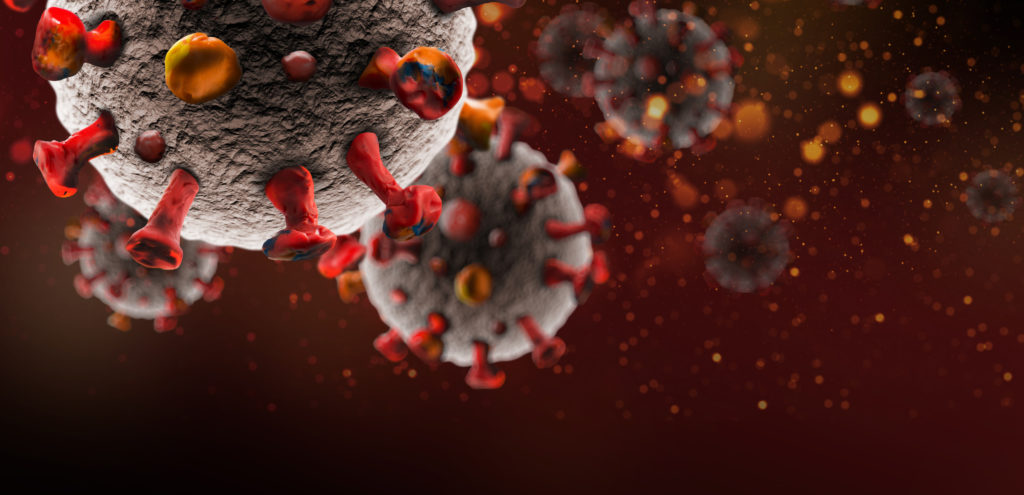
Diseases come and go, but some stay longer than others. And beyond that, some even lay dormant in your body for years, even decades, before they strike. The following list are some of those diseases you should be aware of:
HPV
Human papillomavirus, also known as HPV, is a virus that can cause skin or mucous membrane growths (warts). Some warts can occur on the skin, the genitals, or cause some forms of cancer.
Most cases of HPV clear within 1 to 2 years as the immune system fights off and eliminates the virus from the body. After that, the virus disappears and it can't be transmitted to other people. In extreme cases, HPV may lay dormant in the body for many years or even decades.
HPV is estimated to infect 75% of all men and women. The virus infects the top layer of skin after direct or indirect contact with the virus and remains present in your system.
There are over 120 varieties of HPV, and they are classified into “low-risk”- those that cause common and genital warts, and ‘high-risk”-those that can cause certain cervical, anal, and even head and neck cancers.
In most cases, your body does have the ability to fight the virus since most infections are self-limiting, asymptomatic, or unrecognized, and can disappear in as little as two years. However, the infection does not go away on its own in some people, leading to other health problems.
Infection of HPV in the genitals can lead to cervical cancer, vaginal cancer, or penile cancer. If you are a woman above the age of 25, talk to your doctor about getting HPV testing with your pap smear.
Leprosy
Leprosy was one of the most feared diseases in the world. People who had it were sequestered from the rest of society in leper colonies. The disease was so common and the colonies so populous that colonies had their own crafts and even their own internal currency. Which didn't mean anyone wanted to live there. The tenants of leper colonies were shunned, and people would take mercury in an attempt to drive the disease out of their bodies. This didn't work — and to a certain extent, shunning didn't work, since leprosy can reside in a body for anywhere from a few weeks to twenty years before any symptoms show up.
According to the National Institutes of Health, this is because, leprosy is caused by a bacterium that, in the case of many people, can be fought off by a healthy immune system. Even when you can't fight it off, the bacterium is killed off by overly high temperatures. This is why leprosy is common in armadillos, which have a low body temperature — and why it first appears on the extremities and the nose in humans.
As the bacteria spreads and compromises your circulation, it slowly works its way inwards. Essentially, leprosy allows people to have a long, symptom-free existence because it needs an opportunity to work. Today, a combination of drugs can cure it quickly and easily. Although great strides have been made towards ending leprosy, there are still colonies in many countries.
Prion Diseases
Diseases caused by prions, known as a group as transmissible spongiform encephalopathies or TSEs, are another set of diseases that can lie dormant for decades before striking. There are examples of this all over the world, in all different species, from sheep and cows, to humans.
Prion diseases were first observed in humans in the form of kuru, a degenerative disease found among people in Papua New Guinea. It's possible that the disease started as a heritable genetic trait, but for the most part, it was spread through cannibalism. Later, Creutzfeldt-Jakob disease, a similar neurological disorder, was found all over the world.
It seemed to run in families, but could also spring up seemingly out of nowhere. When "mad cow disease" made headlines, we saw the same symptoms all over again. And, because diseases of this kind can lurk undetected in a body for decades, we will probably keep seeing it.
Prions are tiny forms of protein that lack nucleic acid. This makes them largely immune to radiation and high temperatures — two ways that we render food safe. They eat away at the brain and the nerves, slowly taking away muscle control and lucidity as the disease progresses towards death.
Prions work by converting certain proteins in the body into more prions. The balance of the two, the access of the prions to those proteins, and the ability of the body to resist make for incubation periods of up to thirty years. There's still no known cure for any of these diseases.
Chagas Disease
This was a terror of the early tropical explorers. It was said that Charles Darwin contracted it during his scientific expeditions, as did many unlucky roving Victorians. The disease was transmitted by so-called "kissing bugs." These bugs would settle on a person as they slept and bite their lips. The bugs transmitted the parasite Trypanosoma Cruzi.
At first, the parasite would cause chills, fever, and acute pain as it multiplied in the body. After a time, most healthy people would recover and return home. But the parasite hadn't gone away. Instead, it infected the person's body, putting a strain on both the heart and the intestines.
At first, the victim wouldn't notice — but after a decade or so, the strain got to be too much. Most infected people would experience chronic digestive disorders. Both heart and intestines would enlarge until they were taxed to the limit — and eventually, they would burst or tear apart, killing the infected person.
The incubation period depends almost entirely on the health of the person and the aggressiveness of the parasites. Chagas is still around today, and about nine million people are infected. The drugs for it are in short supply, and it has to be treated early, to be effectively treated at all. This is one of the diseases that most health officials think will be a problem in decades to come.
Shingles
If you had chickenpox, the virus that causes shingles is already avoiding your immune system. Shingles is an infection caused by the Varicella-zoster virus (VZV), the same virus that is responsible for chickenpox.
After someone recovers from chickenpox, the VZV virus hides out in an inactive form in the body. The virus can then become active several years later and cause shingles.
Shingles affects the nerves with signs and symptoms of the infection including:
Increased skin sensitivity
Painful red rashes
Fluid-filled blisters
Severe Itching and burning sensation
These symptoms may last 3 – 5 weeks, but there are medications that can shorten the duration and severity of the illness. Some complications of shingles include post-herpetic neuralgia, an intense long-term nerve pain in the area where the rash of shingles appeared.
You can not get shingles from someone who has the rash. However, if you have never had chickenpox or received the chickenpox vaccine, it is possible for you to get the VZV virus and become sick with chickenpox. Once you are infected with the virus (or had the chickenpox), you are susceptible to shingles at any moment, especially when your defenses are down.
You can get ahead of this virus by making sure to get your shingles shot if you are over the age of 50. Be sure to use RxSaver to save significantly off your shingles vaccine cost.








